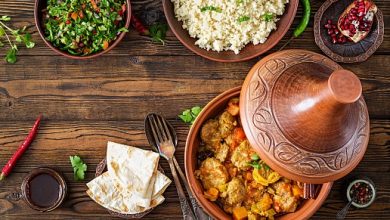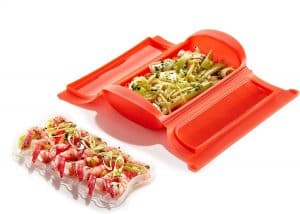Typical Austrian dishes: Top of the 6 best known

In addition to being recognized as an iconic place in the world of opera and classical music, Austria is the country with the largest proportion of territory dedicated to agricultural, livestock and dairy production in all of Europe. This is a characteristic that few know, but it is the main reason why this country has one of the highest quality gastronomies in the world. If you are curious to know what are some of the typical dishes of Austria, you just have to keep reading and you will probably come across delicacies that you already knew but had no idea that their origin lies in the lands where the great icon of classical music was born. , Mozart.
1. Wiener schnitzel
Also known as the Viennese schnitzel, the Wiener schnitzel is the most popular Austrian dish in the world. It is a beef fillet that is softened with the help of a mallet and then battered and fried.
The history of its origin dates back to when Marshal Joseph Radetzky, in 1857, brought the recipe to Vienna after defeating the Milanese.
For the most experienced Austrian cuisine, the secret to obtain the perfect Viennese schnitzel is to use the meat of a white veal, or also known as suckling, of approximately 150 kg and that has only been fed with milk.
2. Pork roast
The roast prepared with pork is part of the typical food of Germany, Austria, Switzerland and the Czech Republic. What characterizes this recipe in each region is the type of seasoning used. As for the cut of meat, the most common for roasting are the loin, loin head and leg.
In Austria, the way in which the pork roast is prepared is by seasoning the meat and then brushing it with mustard and browning it in butter. The next thing to do is finish cooking it completely in a meat broth with red wine, onion and some other vegetables, cut into thin strips.
It can be eaten both hot and cold. If it is the first option, it is served in thick slices, but if it is the second, it is eaten in thin slices. In any case, it is a very common dish in Austrian houses during celebrations and on weekends, while it is accompanied with a lot of cold beer.
3. Kartoffelsalat
Kartoffelsalat is a very typical potato salad of German and Austrian food. This has the peculiarity that it is prepared with hard potatoes, also known as “salad potatoes” in German-speaking countries. This variety of potato is characterized by maintaining its shape even when mixed with the other ingredients of the salad.
While in Germany they eat this dish with mayonnaise, in Austria they prefer to use a dressing made with broth, vinegar, oil, mustard, pepper and salt.
This recipe has a couple of variants in which freshly boiled potatoes are used or reserved for the day after they are cooked. With the first option, the potatoes absorb the flavors of the other ingredients in the salad much better, and with the second you have potatoes with a better consistency.
Some of the other ingredients in this salad are scallions, apples, radishes, onions, eggs, pieces of bacon or sausage, peas, among others.
In addition, the Kartoffelsalat salad is a typical accompaniment to the wiener schnitzel, being the most versatile garnish of Austrian and German food.

4. Backhendl
This recipe for typical cuisine in the Austrian capital, which dates back to the 18th century, consists of a version of fried chicken with a personalized Austrian touch.
Ideally, use a young and small chicken whose pieces are skinned to coat and fry until golden brown and that delicious crunchy texture is obtained. Some prefer not to fry the chicken, instead baking it with a good amount of oil or clarified butter. An extra tip for Austrian fried chicken is to rub each piece with lemon before cooking.
Other little-consumed parts of the chicken such as the heart, liver and stomach, are integrated in the same way, battered and fried, in the dish.
In case the chicken in question is adult, what is done is to previously cook its meat before it is battered and fried.
5. Austrian style goulash
This meat-based recipe, goulash, is very popular in many European countries such as Hungary, Austria and the Balkan area. It is actually the national dish of Hungary, where it is thought to have been created in the 18th century.
The goulash is characterized by being composed mostly of meats rich in cartilage, since this is usually a great thickening or gelling agent in the stew.
In the 19th century this recipe came to Austria from Hungary when soldiers popularized it in homes during the Austro-Hungarian Empire. Originally, the meat that is used is beef, but you can also find variants in which there is lamb, pork and other combined meat.
Due to its slow cooking, it is a dish that is prepared in large quantities to share with friends and family. It is also a popular food in military barracks because of its low cost and high energy content.
6. Semmelknödel
These are some of the most popular side dishes in all of Austrian gastronomy. Semmelknödel are bread balls that are usually eaten as an accompaniment to goulash, pork roast and other dishes consisting of mushrooms or lentils.
They are so popular and easy to make that you can get them ready to eat in supermarkets. Mainly they are made from the remains of other breads, mixing them with eggs, sunflower oil, milk, parsley, salt, lemon peel, and if necessary, some corn flour. All this is mixed and balls are formed and then boiled over low heat until they are seen to float.


